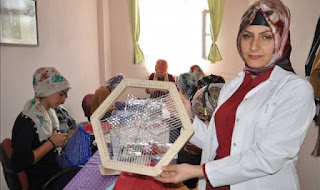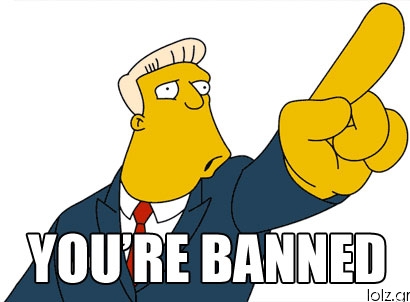Constructive Res judicata: The law revisited
In a recently reported decision [Ramchandra Dagdu Sonavane (Dead) by L.Rs. v. Vithu Hira Mahar (Dead) by LRs. & Ors., AIR 2010 SC 818], the Supreme Court has explained the doctrine of constructive res judicata as applicable in Indian law. A sub-set of the doctrine of res judicata, emanating from Section 11 of the Code of Civil Procedure, the doctrine of constructive res judicata sets to naught any claims being raised in a subsequent proceeding where in an earlier proceeding such claim should / ought to have been raised and decided. A rule of prudence, thus, the doctrine seeks to bar determination and enforcement of claims which have not been raised at an appropriate juncture in judicial proceedings.
The Supreme Court explained the meaning and ambit of the doctrine of constructive res judicata as under;
31) Res-judicata and Code of Civil Procedure :- It is well known that the doctrine of res- judicata is codified in Section 11 of the Code of Civil Procedure. Section 11 generally comes into play in relation to civil suits. But apart from the codified law, the doctrine of res-judicata or the principle of the res-judicata has been applied since long in various other kinds of proceedings and situations by courts in England, India and other countries. The rule of constructive res-judicata is engrafted in Explanation IV of Section 11 of the Code of Civil Procedure and in many other situations also Principles not only of direct res-judicata but of constructive res-judicata are also applied, if by any judgment or order any matter in issue has been directly and explicitly decided, the decision operates as res-judicata and bars the trial of an identical issue in a subsequent proceedings between the same parties. The Principle of res judicata comes into play when by judgment and order a decision of a particular issue is implicit in it, that is, it must be deemed to have been necessarily decided by implications even then the Principle of res judicata on that issue is directly applicable. When any matter which might and ought to have been made a ground of defence or attack in a former proceeding but was not so made, then such a matter in the eye of law, to avoid multiplicity of litigation and to bring about finality in it, is deemed to have been constructively in issue and, therefore, is taken as decided [See AIR 1978 SC 1283].
32) In Swamy Atmandanda vs. Sri Ramakrishna, Tapovanam [(2005) 10 SCC 51], it was held by this court :
“26. The object and purport of the principle of res judicata as contended in Section 11 of the Code of Civil Procedure is to uphold the rule of conclusiveness of judgment, as to the points decided earlier of fact, or of law, or of fact and law, in every subsequent suit between the same parties. Once the matter which was the subject-matter of lis stood determined by a competent court, no party thereafter can be permitted to reopen it in a subsequent litigation. Such a rule was brought into the statute-book with a view to bring the litigation to an end so that the other side may not be put to harassment.
27. The principle of res judicata envisages that a judgment of a court of concurrent jurisdiction directly upon a point would create a bar as regards a plea, between the same parties in some other matter in another court, where the said plea seeks to raise afresh the very point that was determined in the earlier judgment.”
33) When the material issue has been tried and determined between the same parties in a proper suit by a competent court as to the status of one of them in relation to the other, it cannot be again tried in another suit between them as laid down in Krishna Behari Roy vs. Bunwari Lal Roy reported in [1875 ILR (IC-144)], which is followed by this Court in the case of Ishwar Dutt Vs. Land Acquisition Collector & Anr. [(2005) 7 SCC 190], wherein the doctrine of `cause of action estoppel’ and `issue estoppel’ has been discussed. It is laid down by this Court, that if there is an issue between the parties that is decided, the same would operate as a res-judicata between the same parties in the subsequent proceedings. This court in the case of Isher Singh vs. Sarwan Singh, [AIR 1965 SC 948] has observed :
“11. We thus reach the position that in the former suit the heirship of the respondents to Jati deceased (a) was in terms raised by the pleadings, (b) that an issue was framed in regard to it by the trial Judge, (c) that evidence was led by the parties on that point directed towards this issue, (d) a finding was recorded on it by the appellate court, and (e) that on the proper construction of the pleadings it would have been necessary to decide the issue in order to properly and completely decide all the points arising in the case to grant relief to the plaintiff. We thus find that every one of the conditions necessary to satisfy the test as to the applicability of Section 11 of the Civil Procedure Code is satisfied.”
34) So far as the finding drawn in the suit for injunction in O.S. No.104 of 1953, regarding adoption would also operate as a res-judicata in view of the judgment of this Court in the case of Sulochana Amma Vs. Narayanan Nair [(1994) 2 SCC 14]. It is observed: “The decision in earlier case on the issue between the same parties or persons under whom they claim title or litigating under the same title, it operates as a res-judicata. A plea decided even in a suit for injunction touching title between the same parties, would operate as res-judicata. It is a settled law that in a Suit for injunction when title is in issue, for the purpose of granting injunction, the issue directly and substantially arises in that suit between the parties when the same is put in issue in a later suit based on title between the same parties or their privies in a subsequent suit, the decree in injunction suit equally operates as a res-judicata.”
38) Reference may be made to the decision of this court in the case of Sulochana Amma vs. Narayanan Nair, [(1994) 2 SCC 14 Para 9] on the issue between the same parties or persons under whom they claim title or litigating under the same title, it operates as a res-judicata. A plea decided even in suit for injunction touching the title between the same parties, would operate as res judicata : “It is a settled law that in a suit for injunction when title is in issue, for the purpose of granting injunction the issue directly and substantially arises in that suit between the parties. When the same is put in issue in a later suit based on title between the same parties or their privies in a subsequent suit, the decree in injunction suit equally operates as a res judicata.”
39) To the same effect, the judgment of this court in the case of Sulochana Amma vs. Narayanan Nair, [(1994) 2 SCC 14 Para 9] in which it has been held that the issue between the same parties or persons under whom they claim title or litigating under the same title, it operates as a res-judicata. A plea decided even in suit for injunction touching the title between the same parties, would operate as res judicata.


Yorumlar
Yorum Gönder